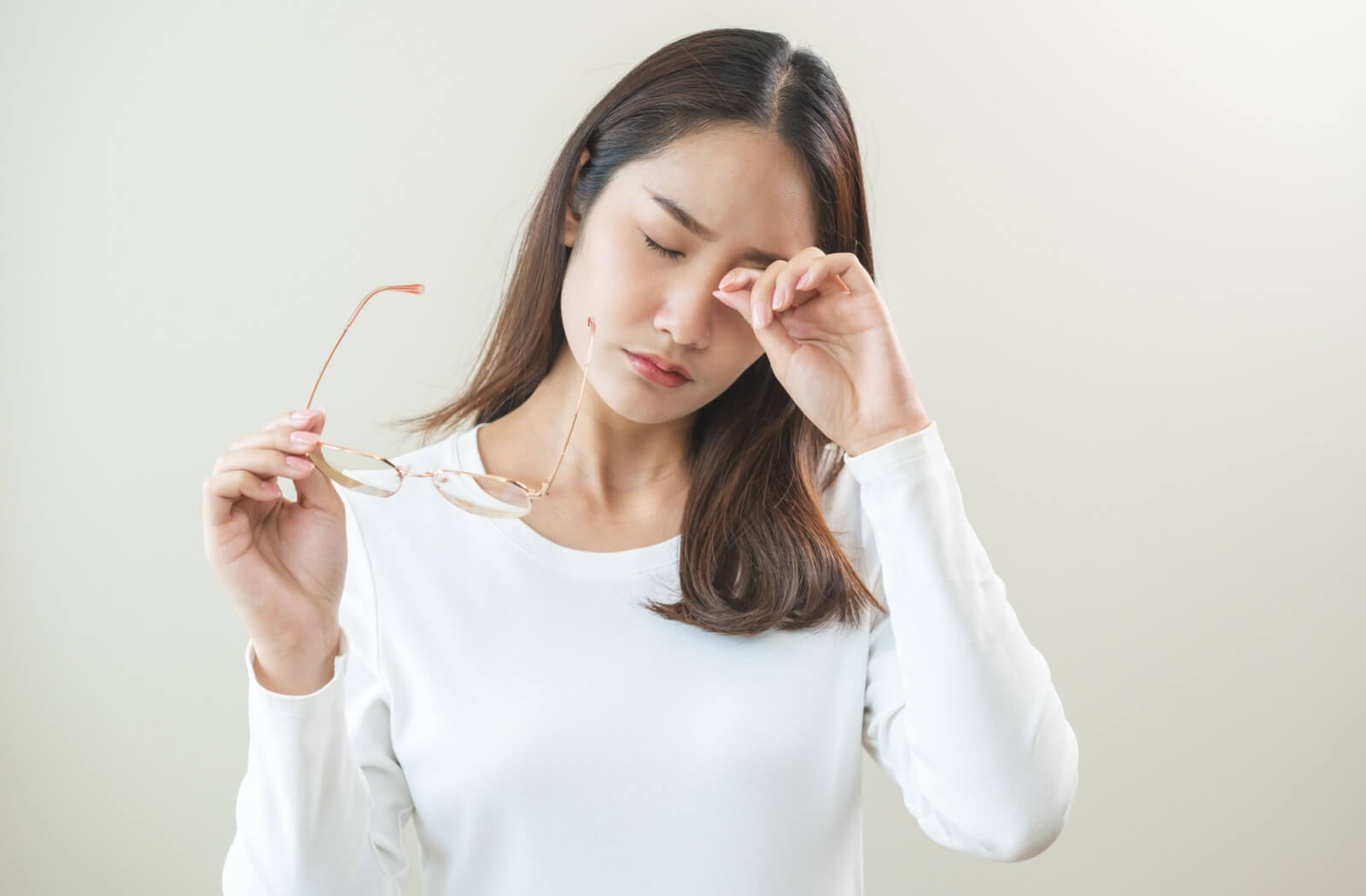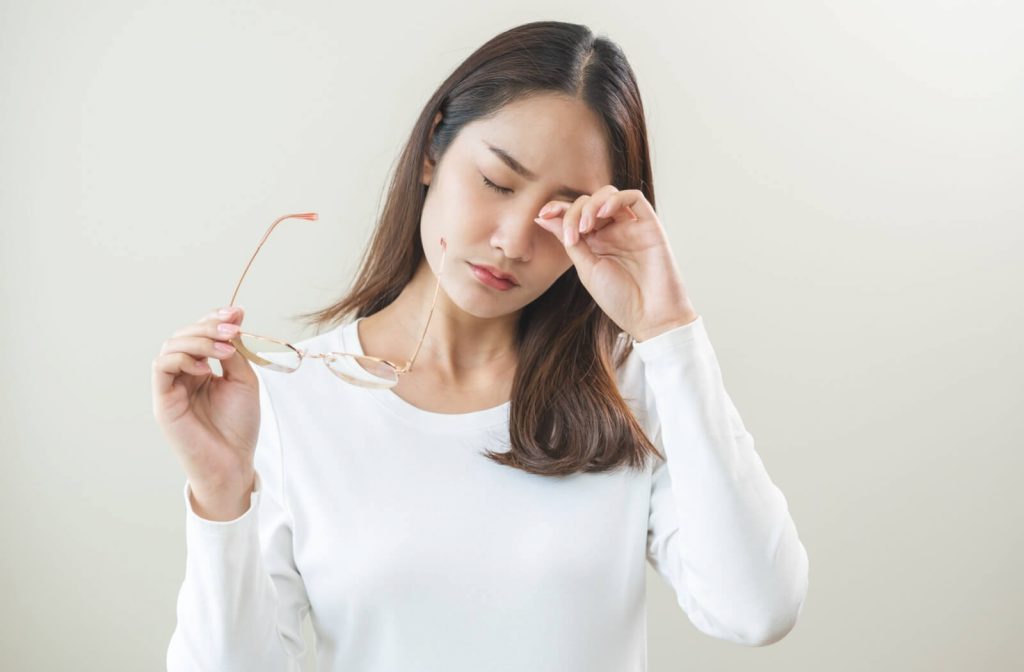Eye health is complex, and different symptoms can appear at the same time, making it hard to know if they’re connected. Dry eye and floaters are two conditions that many people experience, especially with age. Dry eye does not cause floaters, as they affect different parts of the eye, but the two conditions can occur at the same time.
While they may occur together, it’s important to understand what each condition is, what causes them, and whether one can lead to the other.
Understanding Dry Eye
Dry eye occurs when your eyes don’t produce enough tears or when the tears evaporate too quickly. This imbalance can leave the surface of the eyes irritated and uncomfortable. Common causes include aging, hormonal changes, environmental factors, and certain medical conditions.
Common Symptoms of Dry Eye
- A stinging or burning sensation.
- Redness or irritation.
- Sensitivity to light.
- Blurred vision that improves with blinking.
- A feeling of something in the eye.
These symptoms can range from mild to persistent, often fluctuating depending on activities and surroundings.
What Are Floaters?
Floaters are tiny shapes that appear to drift through your vision. They may look like spots, strings, or cobwebs, and are often most noticeable when looking at a plain, bright background such as a blue sky or white wall.
How Floaters Form
Floaters occur when small clumps form in the vitreous, the gel-like substance inside the eye, and cast shadows on the retina. These shadows create the moving shapes you see.
Typical characteristics of floaters include:
- Moving with your eye movements but drifting when your eyes stop
- Varying in shape and size
- Becoming more noticeable in bright lighting
Are Dry Eye & Floaters Connected?
Dry eye affects the tear film and surface of the eye, while floaters originate deeper inside the eye. Because they stem from different parts of the eye, dry eye does not directly cause floaters.
However, the two conditions may occur together due to unrelated causes such as aging, eye strain, or other health conditions. In these situations, one is not causing the other; they’ve simply developed at the same time.
Why They Might Feel Linked
Discomfort from dry eye can make floaters more noticeable. When your eyes feel irritated, vision may feel less clear, drawing more attention to floaters that were already there.
Extended screen time also reduces blinking, which can worsen dry eye symptoms, while bright backgrounds on screens can make floaters easier to see.
When to Seek Medical Attention
While occasional floaters are common, a sudden increase in floaters, especially if accompanied by flashes of light or a shadow in your peripheral vision, can be a sign of a retinal tear or detachment, which requires immediate medical attention.
For dry eye, persistent discomfort that doesn’t improve with over-the-counter artificial tears or lifestyle adjustments should be assessed by an optometrist. This evaluation can help identify the underlying cause and guide treatment.
Managing Dry Eye
Treatment for dry eye depends on the root cause and the severity of symptoms.
Options for Relief
- Using lubricating eye drops to supplement natural tears.
- Adjusting indoor humidity levels.
- Taking breaks from screens to rest the eyes.
- Wearing sunglasses outdoors to protect against wind and sunlight.
If symptoms persist, an optometrist may recommend prescription treatments or in-office procedures.
Living With Floaters

Floaters will often fade into the background over time as the brain learns to ignore them. Most don’t require treatment unless they interfere significantly with vision or are linked to a more serious condition.
When Treatment May Be Considered
In some rare cases, procedures may be discussed to reduce the impact of floaters. These options are typically considered only when the benefits outweigh the risks.
The Importance of Eye Exams
Regular comprehensive eye exams allow optometrists to assess both the surface and internal structures of the eyes. This helps detect changes early and determine the most effective way to manage symptoms.
While dry eye and floaters are not directly related, both can affect visual comfort and quality of life. Understanding the differences between them can help you know when to seek professional guidance.
Professional Support for Eye Health
With the right care, both dry eye and floaters can be managed in ways that help protect your vision and improve your comfort. While these conditions affect different parts of the eye, they can both influence how you see and how you feel throughout the day. A thorough assessment can help determine what’s causing your symptoms and what options might bring relief.
The team at Henderson Vision Centre is dedicated to providing detailed, person-focused care for a range of vision concerns. Their optometrists use diagnostic technology to assess both the health of your eyes and the quality of your vision, offering recommendations tailored to your needs. Whether you’re dealing with the discomfort of dry eye, noticing new floaters, or simply want to stay on top of your eye health, book an appointment with Henderson Vision Centre and start taking steps toward clear, comfortable sight.



